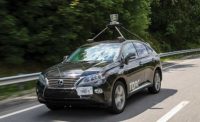Cat Eyes Inspire Vision System for Autonomous Vehicles

Illustration courtesy Gwangju Institute of Science and Technology
GWANGJU, South Korea—Cats have an uncanny ability to see and detect objects in various lighting conditions, including both bright light and darkness. Their eyes feature a unique shape and reflective surface that reduces glare in bright environments and boosts sensitivity in low-light scenarios.
That distinctive feline trait inspired engineers at the Gwangju Institute of Science and Technology (GIST) to develop a vision system that enhances accuracy in challenging environments. The breakthrough could enable smarter, more efficient autonomous systems.
Cat eyes are uniquely adapted. During the day, vertical slit-shaped pupils help them focus and reduce glare. At night, their pupils widen to let in more light, and a reflective layer called the tapetum lucidum boosts night vision, giving feline eyes a familiar glow.
Potential applications for the GIST vision system include autonomous vehicles and humanoid robots, which often struggle to "see" well in different environments, such as bright sunlight, low light or when objects blend into complex backgrounds.
“Robotic cameras often struggle to spot objects in busy or camouflaged backgrounds, especially when lighting conditions change,” says Young Min Song, Ph.D., a professor of electrical engineering and computer science at GIST who worked on the project. “Our design solves this by letting robots blur out unnecessary details and focus on important objects.”
The system includes a slit-like aperture that, like a cat’s vertical pupil, helps filter unnecessary light and focus on key objects. It also uses a special reflective layer similar to the one found in cat eyes that improves visibility in low-light conditions.
“The advanced vision system promises to elevate the precision of drones, security robots and self-driving vehicles, enabling them to adeptly navigate intricate environments and execute tasks with unparalleled accuracy,” explains Song. “From search-and-rescue operations to industrial monitoring, these cutting-edge robotic eyes stand ready to complement or even replace human efforts in a variety of critical scenarios.”
Looking for a reprint of this article?
From high-res PDFs to custom plaques, order your copy today!






